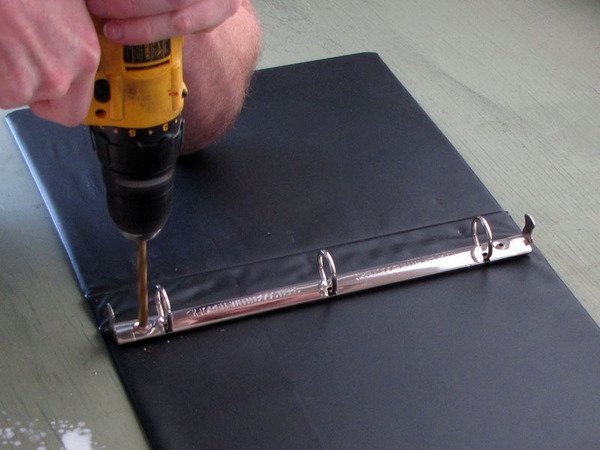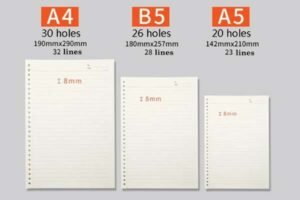
Piles of old binders cluttering your office or home? It feels wasteful just tossing them in the trash, especially those sturdy metal rings. Thankfully, landfill isn't the only destination for them.
Instead of discarding old binders, you can reuse them for storage, repurpose them into new items, donate them if they're in good condition, or dismantle them to recycle the metal and cardboard components separately.
It's true, those binders don't have to become waste. Many parts can actually find a second life, which is much better for the environment and often more practical. The most important step, especially for recycling, is usually separating the different materials. You have the metal rings, the often plastic or vinyl cover, and the cardboard inside. Thinking about these parts individually opens up several possibilities beyond just throwing the whole thing away.
Let's break down these options. Reusing is the simplest path – just slap on a new label and use them for archiving old project files or storing manuals and instructions. Repurposing involves a bit more creativity. Think about using the covers as sturdy bases for craft projects or the rings for organizing things. Donation is great if the binders are still functional. And while recycling the whole binder is tough, recycling the parts is often doable if you take a moment to separate them.
How Do You Recycle Binder Components?

So, you've decided to recycle. Great! But you usually can't just toss the entire binder into your recycling bin. How do you actually recycle the different parts properly?
To recycle binder components1, carefully separate the metal rings and mechanism from the cover and cardboard. The metal can often go with scrap metal recycling, and clean cardboard can go into paper recycling bins.
Binder Recycling
Recycling binders involves a few steps because they are made of mixed materials. Here’s a closer look:
Separating the Components
This is usually the trickiest part.
- Open the binder flat.
- Locate the rivets holding the metal ring mechanism to the spine.
- Use tools carefully: Sometimes you can pry the mechanism off with a flathead screwdriver. Other times, strong pliers might be needed to bend or break the rivets or metal tabs. Always wear safety glasses when doing this, as metal pieces can snap.
- Peel away the cover: If the cover is vinyl or plastic fused onto cardboard, try to peel it off. If it’s just cardboard, it’s simpler.
Recycling the Metal Rings
The ring mechanism is typically made of steel or other recyclable metals.
- What: The metal spine and rings.
- How: Collect them with other scrap metal.
- Where: Check with your local recycling center. Some accept scrap metal directly. Alternatively, dedicated scrap metal dealers will take them. They are highly recyclable.
Dealing with the Cardboard
The stiff boards inside the cover are usually cardboard or pressboard.
- What: The flat cardboard pieces after removing any plastic/vinyl covering.
- How: It must be clean cardboard. If it's fused with plastic or heavily soiled, it likely can't be recycled with regular paper/cardboard.
- Where: Place clean, separated cardboard in your standard cardboard recycling bin.
The Challenge of Plastic Covers
This is often the least recyclable part.
- What: The vinyl or plastic sheeting covering the cardboard.
- Why it's hard: Binder covers are often made from PVC (Polyvinyl Chloride, #3 plastic), which is rarely accepted in curbside recycling programs due to its chemical composition.
- What to do: Check your local recycling guidelines specifically for PVC or #3 plastic. Unfortunately, this part often has to go into the regular trash destined for landfill.
| Component | Recyclable? | How / Where | Notes |
|---|---|---|---|
| Metal Rings/Mech | Yes | Scrap metal recycling (local center, dealer) | Highly recyclable |
| Cardboard Insert | Yes, if clean & separated | Standard paper/cardboard recycling bin | Must remove plastic/vinyl covering |
| Plastic/Vinyl Cover | Usually No (check locally) | Often landfill trash; check for special programs | Typically PVC (#3), rarely accepted curbside |
Creative Ways to Repurpose Old Binders?

Instead of focusing only on disposal, how about giving old binders a completely new job? A little creativity can turn binder parts into useful household items.
You can creatively repurpose old binders by turning the covers into DIY clipboards, recipe holders, or sturdy surfaces for art projects. The separated rings can organize keys, cables, or even hold small hanging items.
Repurposing Ideas
Getting crafty with old binders can be surprisingly rewarding.
Crafting with Binder Covers
The sturdy covers offer a solid base for many projects.
- DIY Clipboard: Cut a cover to size, smooth the edges, and attach a large binder clip at the top.
- Recipe Book Stand: Prop open a binder (perhaps decorate it) to hold cookbooks or tablets in the kitchen.
- Art Canvas/Base: Use the flat covers as a rigid surface for painting, collages, or mounting pictures. You can cover them with fabric or decorative paper first.
- Portable Easel: Make simple cuts and folds to turn a cover into a small stand for a phone or tablet.
Clever Uses for Binder Rings
Don't toss the metal rings even if you discard the cover!
- Cable Organizers: Snap rings around coiled cables to keep them tidy.
- Keychains: The smaller rings can make simple, sturdy keychains.
- Swatch Holders: Use rings to hold paint chips, fabric swatches, or flashcards together.
- Wall Organizer: Mount several ring mechanisms on a board or wall to hang tools, craft supplies, or kitchen utensils.
- Mini Hanging Planters: Secure small pots (like for air plants) within the rings and hang them up.
Organizational Hacks
Beyond crafts, repurposing can help with organization.
- Drawer Dividers: Cut binder covers into strips to create custom dividers inside drawers.
- Magazine Files: Use intact binders (perhaps decorated) stood upright on a shelf to hold magazines or papers.
- Project Folders: Keep related loose papers, notes, and samples together inside an old binder dedicated to a specific project.
Where Can You Donate Usable Binders?

What if your binders are still perfectly fine, just surplus to your needs? Throwing them out seems like a real shame. Many places would be happy to take them off your hands.
You can donate binders in good, usable condition to local schools, teachers, community centers, thrift stores (like Goodwill), libraries, or non-profit organizations. Always call ahead first to ensure they are accepting donations.
Donations
Giving your binders a second life through donation is a fantastic option.
Checking Binder Condition First
Before donating, make sure the binders are actually usable.
- Rings: Do they open and close properly? Are they aligned?
- Cover: Is it reasonably clean? Are the seams intact? Minor scuffs are usually okay, but large tears or broken spines make them less desirable.
- Overall: Would you be happy to receive this binder? If yes, it's probably suitable for donation.
Potential Donation Spots
Think about who uses binders regularly.
- Schools & Teachers: Often operate on tight budgets and appreciate classroom supplies. K-12 schools and even colleges might accept them.
- Community Centers & After-School Programs: Use them for organizing activities and materials.
- Thrift Stores: Places like Goodwill, Salvation Army, or local charity shops resell items to fund their programs.
- Non-Profit Organizations: Many non-profits need office supplies for their administrative work.
- Libraries: Some libraries use binders for organizing local history materials or other resources.
- Creative Reuse Centers: These centers collect materials for artists and crafters – even slightly damaged binders might be useful here.
Call Ahead: Why It Matters
Don't just drop off binders without checking.
- Need: The organization might already have too many binders or simply not need them at the moment.
- Storage Space: They might lack the space to store donations.
- Specific Requirements: Some places might only accept certain sizes or types.
- Drop-off Procedures: They will tell you when and where to bring your donation. A quick call saves everyone time and effort. You can also check their website for donation guidelines.
Conclusion
So, before you toss that old binder, remember your options. You can often reuse, repurpose, donate, or recycle its parts. Making a conscious choice helps reduce waste and keeps valuable materials out of the landfill for longer.
-
Explore this resource to learn the best practices for recycling binder components and reducing waste effectively. ↩





